Struggling with thin, watery tomato sauce? This guide has you covered! Discover simple, effective ways to thicken your sauce without sacrificing flavor or texture. From simmering to adding meat, these methods will transform your sauce into a rich, hearty masterpiece.
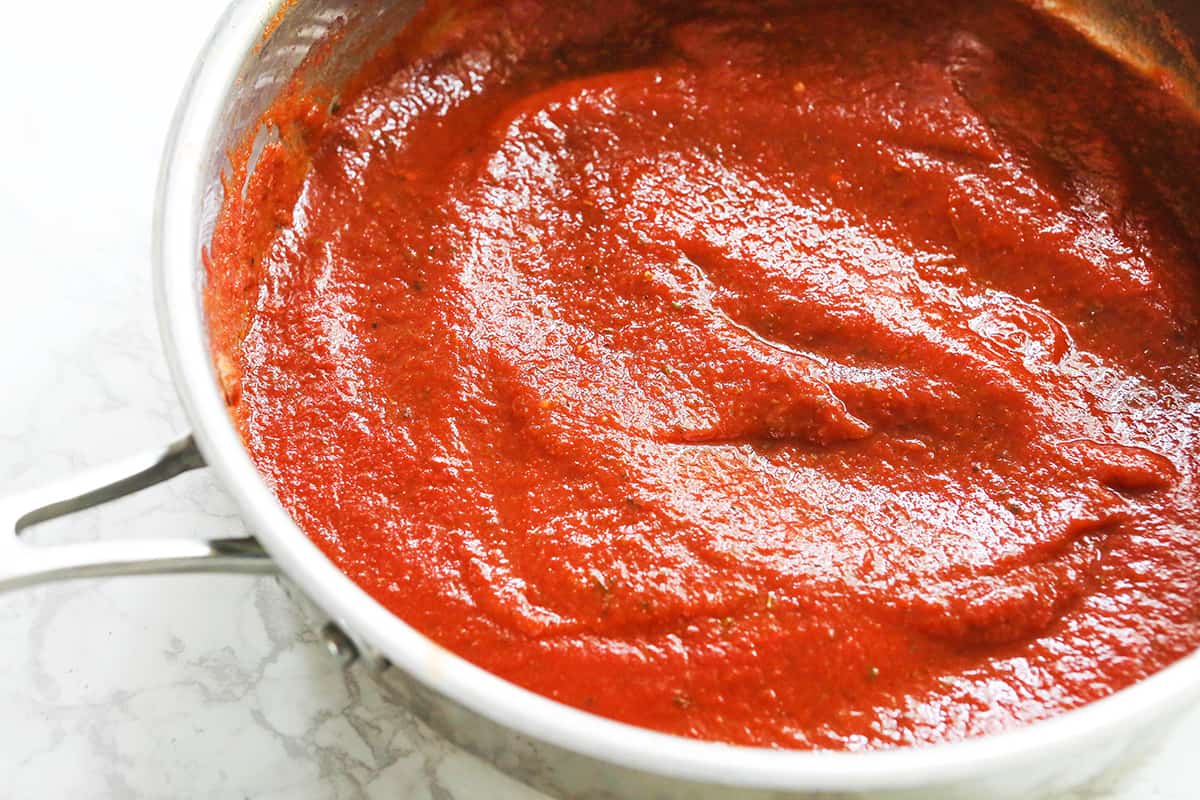
Original post: January 2022 | Updated: May 2025
Are you facing the disappointing moment when your tomato sauce resembles tomato soup? Maybe you had high hopes for a rich, hearty sauce, but instead you have watery tomato sauce on your hands?
If you need to thicken your sauce without compromising its flavor or texture, you’re in the right spot! This guide will walk you through simple and effective methods to achieve that perfect, velvety consistency.. and quickly! You’ll be able to rescue your sauce fast.
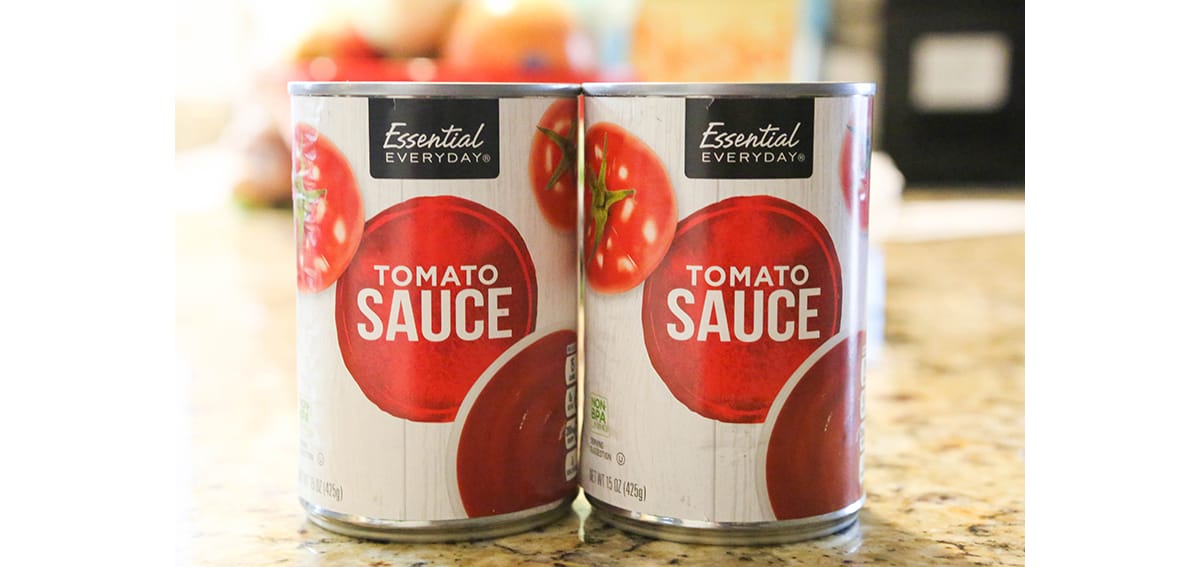
How To Thicken Tomato Sauce
Thin sauce is not a lost cause, I promise. It’s a blank canvas, waiting to be transformed! Whether you’ve made your homemade sauce from scratch or popped open a can from the pantry, all it usually takes is a little simmering to bring it to life.
We’ve gathered a variety of simple techniques to help you turn that runny sauce into a thick, velvety masterpiece. No matter the method you choose, you’ll soon have a perfectly rich tomato sauce that’s ready to eat!
Let It Simmer
The best way to thicken tomato sauce (in my sauce-loving opinion) is to let it simmer on the stovetop. The reduction process gradually evaporates excess liquid, leaving you with a richer, more concentrated sauce.
How to Simmer
- Pour the sauce into a medium skillet (not a deep pot).
- Set the heat to medium-low and bring the sauce to a gentle simmer.
- Leave the pan uncovered to allow steam to escape.
- Simmer for anywhere from 10 to 45 minutes, stirring occasionally to prevent burning.
- Adjust the heat if necessary to keep the sauce at a low, steady simmer.
Tips for Success
- Use a wide pan: A skillet or sauté pan works best for faster evaporation.
- Stir often: This prevents the sauce from sticking to the pan and burning.
- Patience: The longer it simmers, the richer the flavor becomes.
- Monitor the heat: Avoid boiling, as this can cause the sauce to burn or splatter all over the place.
Throw It In The Slow Cooker
If you have a bit more time, using a slow cooker is such an easy, hands-off way to thicken your sauce. The steady, low heat reduces the sauce slowly without requiring much attention. This simple trick will result in a nice, smooth sauce.
How to Slow Cook
- Transfer the thin tomato sauce to a small crockpot.
- Set the heat to low heat and leave the lid slightly ajar to let steam escape.
- Cook for 2 to 4 hours, stirring every 30 minutes or so.
- If the sauce is still too thin after 4 hours, cook for another 30 minutes (with the lid completely off) until the right thickness has been achieved.
Tips for Success
- Leave the lid ajar: Allowing steam to escape is important for evaporation.
- Stir occasionally: This helps distribute heat and prevents scorching.
- Season as you go: The slow reduction process can intensify flavors, so taste periodically and adjust as needed.
- Perfect for busy days: Set it and forget it, while you tackle other tasks.
Tomato Paste
Tomato paste is a pantry staple that adds both thickness and a deeper tomato flavor to your sauce. This trick will produce a heartier texture to your tomato sauce.
How to Add
- Add 1 to 2 tablespoons of tomato paste to your simmering sauce.
- Stir thoroughly to incorporate, breaking up any clumps with a spoon.
- Cook for 5 to 10 minutes over medium heat to allow the paste to blend in and thicken the sauce.
- Taste and adjust seasoning as needed.
Tips for Success
- Sauté for extra flavor: Briefly cooking the paste in olive oil before adding it to the sauce enhances its flavor.
- Add gradually: Start with a small amount and increase if necessary.
- Balance acidity: Tomato paste can be acidic, so a pinch of sugar or a splash of cream can help balance the flavor.
- Combine with fresh tomatoes: If the sauce is too paste-y, add a bit of crushed tomato to even out the texture.
Tomato Puree
Tomato puree can add thickness without overwhelming the sauce’s original flavor, making it a great choice with a more subtle approach.
How to Add
- Add 1/2 to 1 cup of tomato puree to your sauce, depending on how thin it is.
- Stir well to combine and bring to a simmer.
- Let it cook for 5 to 10 minutes until the puree is fully combined and the sauce has thickened.
Tips for Success
- Taste as you go: Puree can mellow the sauce, so adjust herbs and spices until you achieve a flavorful sauce.
- Go unsalted: This gives you more control over the seasoning.
- Combine with simmering: Use this method alongside simmering for best results (double duty!).
- Add flavor: Adding a bit of garlic or onion while simmering can enhance the overall taste.
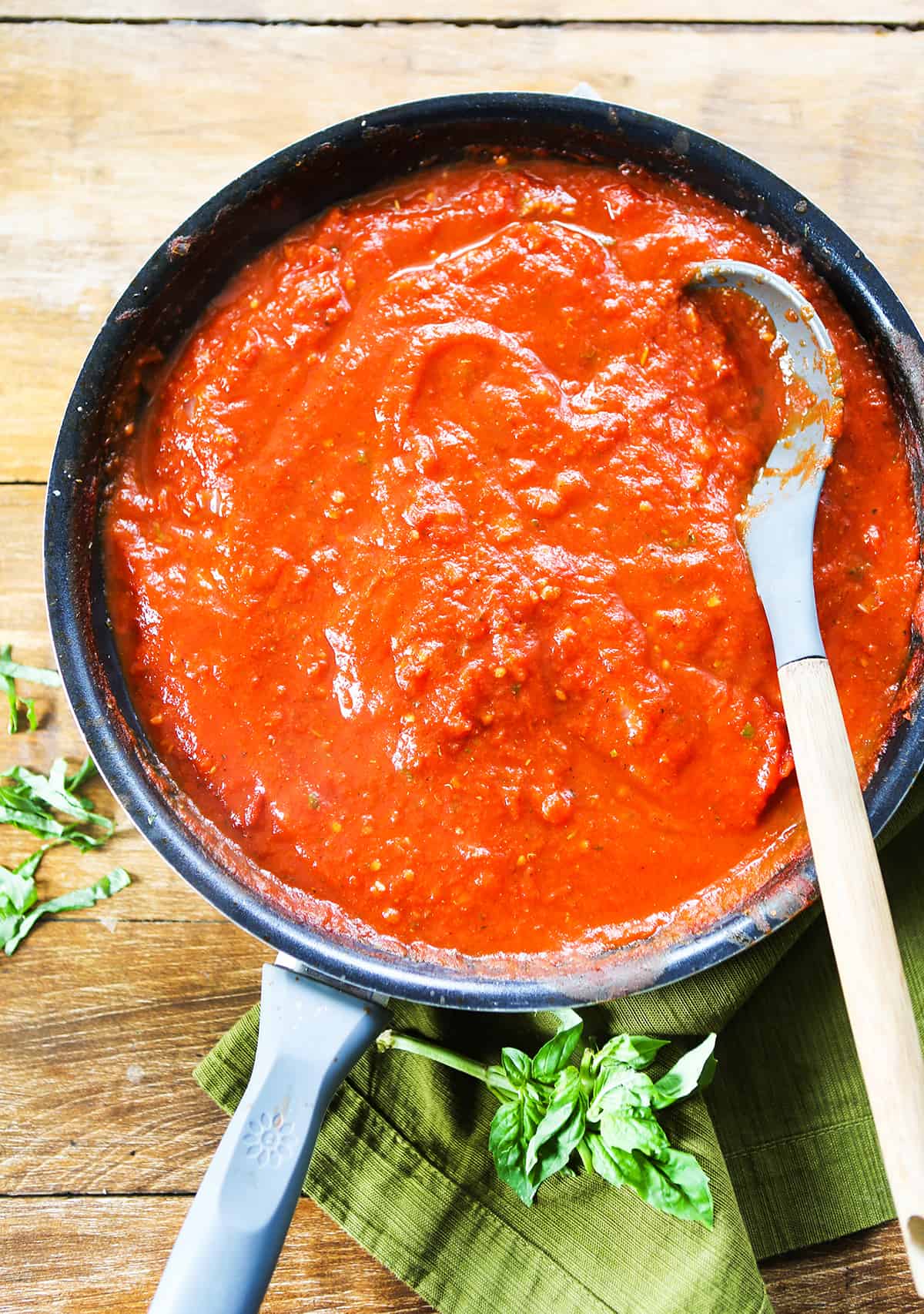
Marinara Sauce
Adding marinara sauce not only thickens your tomato sauce but also boosts its flavor with herbs and seasoning. I absolutely love this option, as it creates such a thick tomato sauce while really boosting the flavor.
How to Add
- Add 1/2 to 1 cup of marinara to your thin sauce. (Homemade Marinara Sauce is so easy and delicious if you have the time!)
- Stir well and let it simmer for 10 to 15 minutes to allow the flavors to meld.
- Taste and adjust seasoning as needed since marinara can add extra salt and herbs.
Tips for Success
- Go chunky: This will add texture as well as thickness.
- Check seasoning: Marinara is often seasoned, so be cautious when adding salt.
- Pair with meats: This method works well with meat sauces where additional depth is desired.
- Homemade touch: If possible, use homemade marinara for a fresher flavor.
Heavy Cream
Adding heavy cream not only thickens your sauce but also makes it luxuriously creamy. This is the preferred method when a rich texture is desired.
How to Add
- Slowly pour up to 1/2 cup of heavy cream into your simmering sauce.
- Stir frequently to combine.
- Let it simmer for 5 to 10 minutes to thicken and blend flavors.
- Adjust seasoning as needed, as cream can mellow out the sauce.
Tips for Success
- Don’t boil: Boiling can cause the cream to separate, so keep the heat low.
- Add gradually: Start with a small amount and increase as needed.
- Balance the richness: A pinch of salt or a dash of something acidic such as lemon juice can brighten the flavor.
- Perfect pairings: Use in pasta dishes for a creamy sauce and silky finish.
Bread Crumbs
Bread crumbs are an easy way to bulk up and thicken your sauce, especially when you’re wanting a more rustic, hearty consistency.
How to Add
- Add 1/4 cup of bread crumbs to the sauce.
- Stir and let it simmer for 5 minutes to absorb moisture.
- If needed, add additional breadcrumbs (1 tablespoon at a time) until desired thickness is achieved.
- Stir occasionally to prevent clumping.
Tips for Success
- Use plain: Avoid seasoned bread crumbs unless you want to change the flavor profile.
- Add gradually: Bread crumbs thicken as they absorb liquid, so start small.
- Let it sit: After stirring in the breadcrumbs, let the sauce rest for a few minutes to allow full absorption.
- Balance with acidity: If the sauce becomes too heavy, add a splash of vinegar or lemon juice.
Cornstarch Slurry
If you need to thicken tomato sauce quickly, a corn starch slurry can be a great method. This works well if you’re short on time and need to fix a thin sauce fast. Keep in mind that using cornstarch can sometimes produce a slightly gelatinous texture, so I consider this to be a last resort.
This method is ideal for emergencies or when you’re dealing with particularly runny sauces, but if you have the time, choose methods like simmering or adding tomato paste for a more natural, robust texture.
How to Make a Cornstarch Slurry
- Combine equal parts cornstarch and cold water in a small bowl. 1/4 cup of each is a good starting point.
- Whisk the mixture until it is completely smooth, ensuring there are no lumps.
- Gradually stir the slurry into your simmering sauce, keeping the heat at medium or below.
- Continue to stir while the sauce thickens, which will happen quickly.
- Allow it to cook for another 2 to 3 minutes to ensure the cornstarch is fully incorporated.
Tips for Success
- Go slow: Add the slurry a little at a time, as you may not need the entire amount.
- Check texture: Cornstarch can create a glossy, gelatinous consistency, so use it sparingly if you’re aiming for a more traditional, hearty sauce.
- Avoid lumps: Always mix the cornstarch with cold water before adding it to the hot sauce to prevent clumping.
- Reheat cautiously: Sauces thickened with cornstarch may break down if reheated too aggressively, so warm leftovers slowly.
Flour Slurry
A flour slurry is another great way to create a thicker sauce, offering a more traditional and stable texture compared to cornstarch. While it takes a bit longer to cook out the raw flour taste, it results in a heartier consistency without the gelatinous texture that cornstarch can sometimes produce.
Flour slurries works particularly well for sauces that need more body and they hold up better when reheated. Whether you choose cornstarch or flour, both methods are super quick fixes.
How to Make a Flour Slurry
- Mix 2 tablespoons of all-purpose flour with 1/4 cup of cold water in a small bowl.
- Whisk until smooth and free of lumps.
- Gradually stir the slurry into your simmering sauce, keeping the heat at medium.
- Continue stirring as the sauce thickens, and let it cook for about 5 to 7 minutes to remove any raw flour taste.
Tips for Success
- Cook it out: Make sure to cook the sauce long enough after adding the slurry to eliminate the raw flour flavor.
- Use cold water: Always mix flour with cold water to avoid lumps.
- Adjust as needed: You may repeat the process with another slurry if the sauce is still too thin, but be cautious not to over-thicken.
Roux
A roux is a thickening agent made from equal parts fat and flour, typically used to add body and a rich, buttery flavor to sauces. While butter is the most common choice, oils like olive or vegetable oil work, too.
Roux is ideal for creamy or hearty tomato sauces, such as a tomato cream sauce, where added richness enhances the dish. However, since it can slightly alter the texture of tomato-based sauces, consider other methods like simmering or adding tomato paste if you want to achieve a traditional tomato flavor.
How to Make and Add a Roux
- In a pan or skillet, melt 1/4 cup of butter (or oil) over medium heat.
- Add 1/4 cup of all-purpose flour and whisk continuously to combine.
- Cook the mixture for about 2 to 3 minutes, or until it becomes smooth and starts to turn a light golden color.
- Once the roux is ready, gradually add it to the simmering tomato sauce, whisking to incorporate.
- Continue stirring for a few minutes until the sauce thickens to your desired consistency.
Tips for Success
- Don’t rush: Cooking the flour for a couple minutes before adding it to the sauce ensures a smooth, flavorful result.
- Control the color: The longer you cook the roux, the darker it gets. For tomato sauce, a light or blond roux works best to avoid overpowering the tomato flavor.
- Avoid lumps: Starchy ingredients such as flour can form lumps when added directly to pure tomato-based sauces. To address this, whisk the roux thoroughly and add it gradually.
- Flavor boost: Roux not only thickens but also adds a subtle, nutty flavor that pairs well with creamy tomato sauces or dishes where richness is desired.
Meat
Adding cooked meat is the easiest way to thicken tomato sauce while also boosting flavor and heartiness. Ground beef, turkey or Italian sausage work well, turning a thin sauce into a robust, satisfying meal.
This method is perfect for dishes like spaghetti bolognese, lasagna or meat-based pasta sauces, making them more filling and ideal for feeding a crowd. Plus, it’s a great way to use up leftover ground meat!
How to Add
- Cook the meat first: In a large skillet, heat a few tablespoons of olive oil over medium heat. Add your choice of ground meat (~1 pound works well for a standard pot of sauce) and break it up with a spatula.
- Season it: Add salt, pepper and any seasonings that complement your sauce, such as garlic powder, Italian seasoning or a pinch of red pepper flakes.
- Brown the meat: Cook until the meat is browned and no longer pink, about 10 minutes. Make sure to drain any excess fat to avoid a greasy sauce.
- Incorporate the sauce: Once cooked, add the tomato sauce directly to the pan with the meat. Stir well to combine and let it simmer for 10-15 minutes. This allows the flavors to meld and the sauce to thicken as the meat absorbs some of the liquid.
Tips for Success
- Use leftovers: If you have leftover cooked meat from another dish, simply crumble it into your sauce and simmer to reheat and thicken.
- Use flavorful meats: Italian sausage or ground beef add a deep, robust flavor, while ground turkey provides a lighter, leaner option. A combination of beef and pork is a great way to add complexity.
- Add spice: For extra depth, season the meat with onion, garlic, oregano or even a splash of red wine while browning.
- Don’t skip draining: Removing excess grease helps prevent the sauce from becoming oily and keeps the flavors balanced.
- Simmer: After combining the meat and sauce, let it simmer uncovered. This not only thickens the sauce but also allows the flavors to meld beautifully.
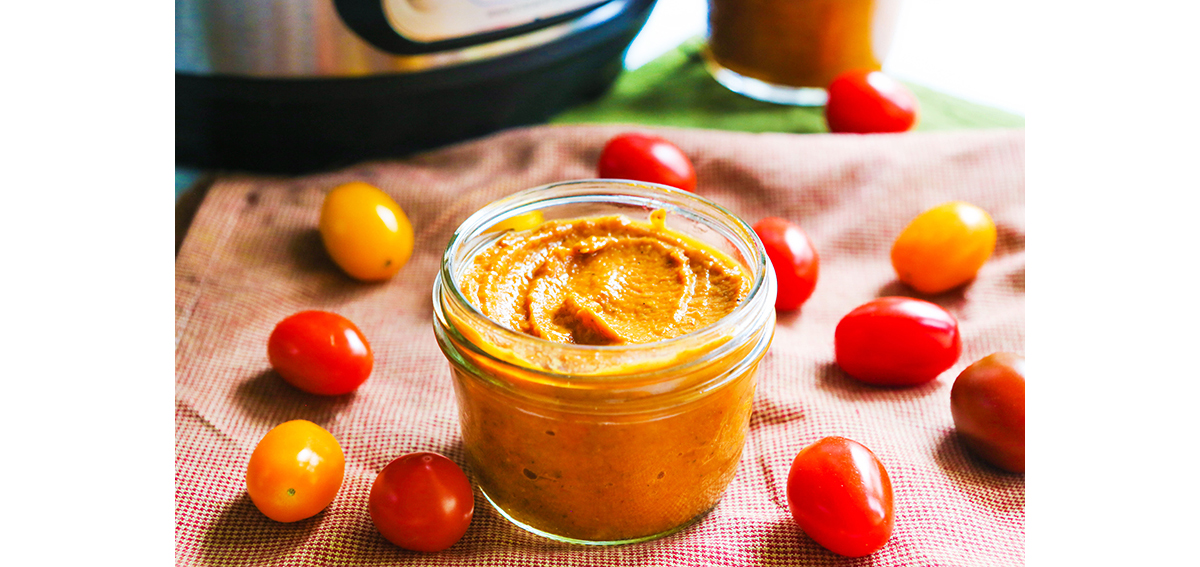
Homemade Tomato Sauce
Instant Pot Tomato Sauce tastes super fresh, made with fresh tomatoes and with no peeling or seeding required! Use it as a topping on pasta! This is the easiest tomato sauce recipe on the planet and you will be blown away by the flavor.
What is a Good Substitute For Tomato Sauce
Tomato paste combined with an equal amount of water is the best substitution for sauce. Another option is using whatever type of canned tomatoes you have on hand. Drain, puree and drain again. Ketchup and tomato soup also work in a pinch!
Uses For Tomato Sauce
- Pour it over the top of cooked plain pasta of any kind, with a sprinkling of Parmesan or mozzarella cheese on top.
- Add it to your morning eggs because everything tastes great with eggs.
- Dunk grilled cheese sandwiches into it before each bite.
- Toss it with grilled or roasted veggies.
- Seafood tastes great when swimming in a simple tomato sauce.
- Use in place of salad dressings for a low-cal way to spruce up a salad.
Flavor Boosters for Tomato Sauce
- A few splashes of Worcestershire sauce will add a ton of bold flavor.
- Spruce up the flavor of the sauce by using any or all of the following: red pepper flakes, fresh tomatoes or diced canned tomatoes, crushed tomatoes, olive oil, fresh basil or dried basil, grated Parmesan, hot sauce, a few minced garlic cloves or fresh chopped onions.
- Consider adding sugar (or other sweetener) 1 teaspoon at a time for a sweeter sauce.
- Add a dash or two of red wine for a more complex end result.
- Throw in some chopped veggies, such as green pepper, onion, mushrooms, zucchini or carrots.
- Cheese is a great way to boost flavor. Add up to 1/2 cup of cheddar, mozzarella, cream cheese or parmesan cheese.
- Add seasonings. Oregano, Italian seasoning, salt, black pepper, onion powder and garlic powder are all great ways to increase the flavor profile. Use any dried or fresh herbs of your liking, such as basil leaves, dried or fresh Italian parsley or fennel seeds.
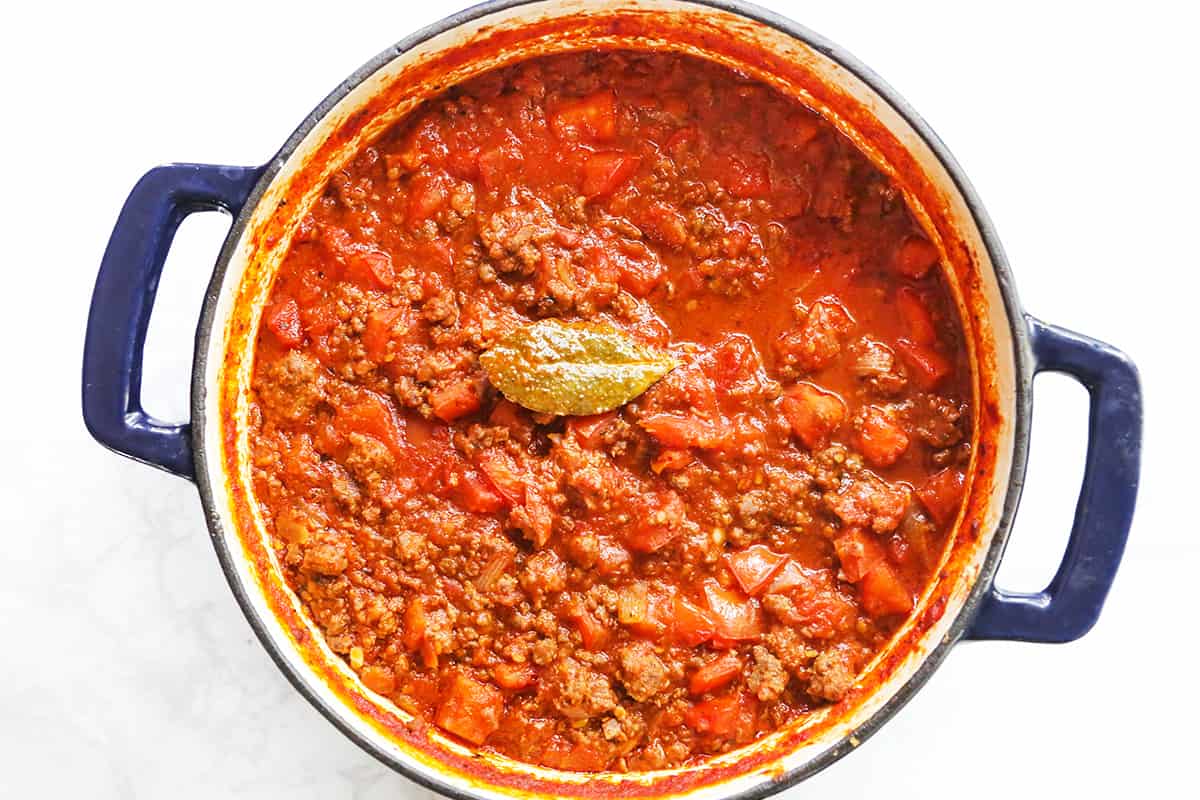
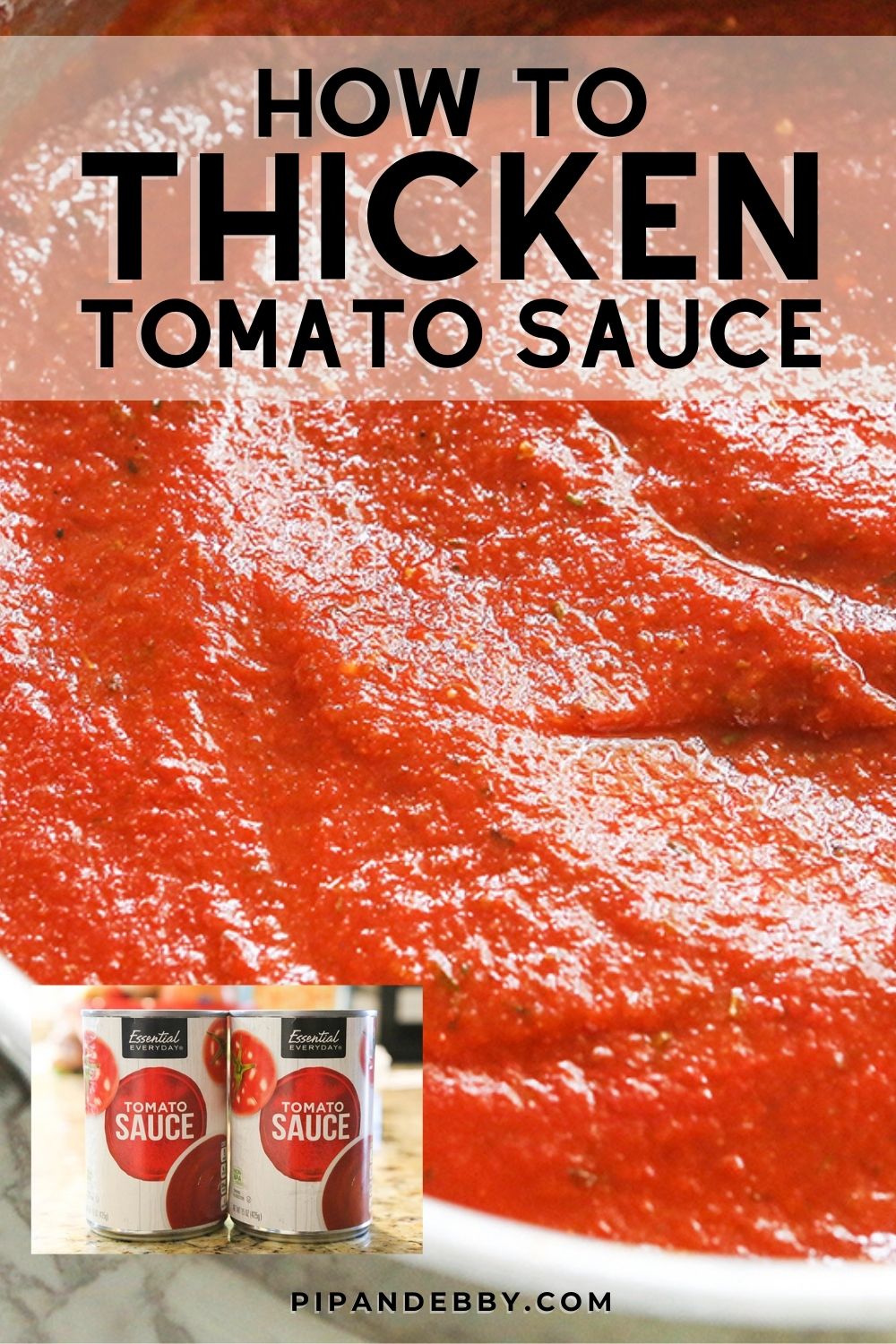



Leave a Reply